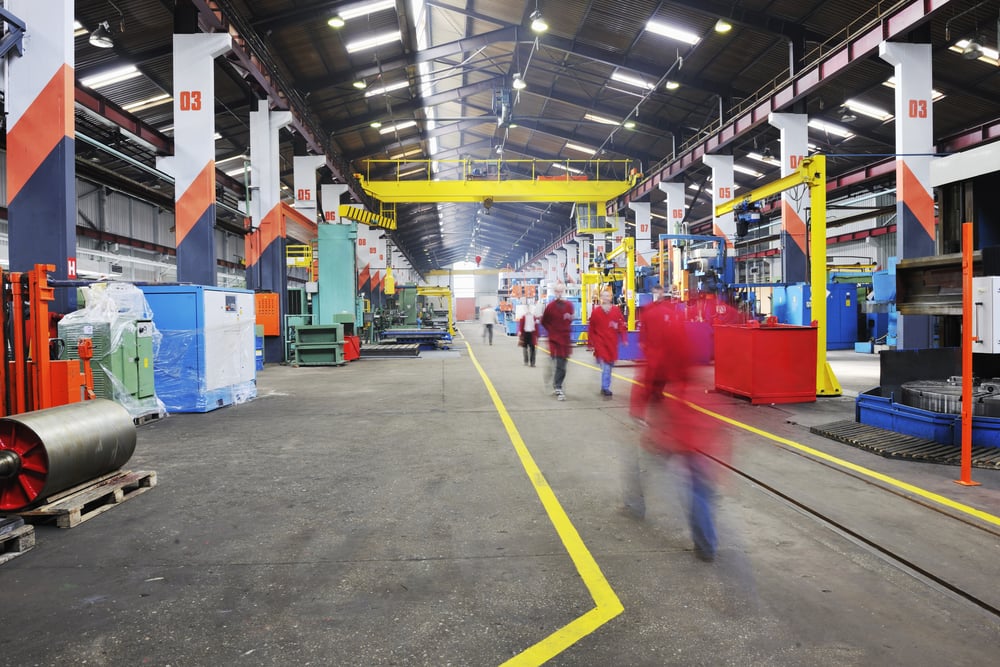PlantStar BLOG
Quality Management Best Practices for Manufacturing
Jan 5, 2024 4:00:00 PM / by David Crowley

Manufacturing has always been a highly competitive industry, and it’s become even more so in today’s fast moving global landscape. Because quality is a key factor in manufacturing success, it’s important to create a quality-focused corporate culture. Including everyone in quality management best practice development, embracing lean manufacturing, and empowering employees are key steps companies can take to build a culture that supports robust and reliable quality control.
One reason to focus on quality standards is that it’s simply good business. According to the MIT Sloan Management Review, an emphasis on quality results in fewer defects, lower manufacturing expenditures, and reduced service costs, contributing to higher overall return on investment (ROI) and fueling operational excellence. Adopting best practices can help businesses improve quality performance metrics and reduce supply chain costs while boosting productivity, customer satisfaction, and profitability. Below are some key best practices for manufacturers to follow.
Make Quality Everyone’s Responsibility
Many manufacturing firms have a quality assurance department that’s tasked with checking for product defects. While this is certainly helpful, it’s not enough. To be successful, quality must be integral to every step in the manufacturing process, not something that’s done only at the end of a production run. Manufacturers should strive for continuous improvement and aim to exceed customer expectations. They can do this by implementing a framework of policies, procedures, resources, relationships, and quality management systems that support real-time quality monitoring.
Adopt Lean Principles
Lean manufacturing is a principle that applies a variety of methodologies, such as Six Sigma and just-in-time production, to enhance efficiency, quality, and product delivery while reducing costs. Other examples of lean practices include the following:
- Value stream mapping allows lean manufacturers to identify and eliminate non-value steps in the supply chain and the production processes.
- 5S, which stands for sort, set in order, shine, standardize,and sustain, helps create a clean, organized, and efficient workplace to improve efficiency, productivity, and quality.
- Kanban is a Japanese word that means visual card and centers on improving inventory control systems. The methodology emphasizes visual displays that help employees manage the flow of materials and information.
Leverage Performance Information with Data Analytics
Today, manufacturers generate more information about their processes than ever before. Properly managed, this data can provide critical visibility into supply chain and production patterns, helping businesses identify inefficiencies, track product quality, and understand how their equipment is working. A manufacturing execution system (MES) is a powerful tool that can use detailed quality metrics to measure yields, defects, scrap, and finished goods. It can then correlate the numbers to items and like time periods to identify trends, strengths, and insights that allow manufacturers to streamline workflow and continuously improve processes.
Automate Wherever Possible
Because humans make mistakes, manual processes can create many inefficiencies. Automation enables suppliers to replace manual quality assurance tasks with systems that rely on items like machine sensors, vision systems, and artificial intelligence. By removing the potential for human error, automated systems can catch issues earlier, streamline maintenance processes, and improve overall equipment effectiveness (OEE). Automated systems can examine metrics like downtime, reject codes, voltage, cycle times and counts, part counts, and job completions.
Automation is a key component of predictive maintenance, It can catch deviations faster, conduct root-cause analyses, and automatically initiate corrective actions to reduce downtime and defects. For example, an MES can fire off an alert when a machine looks like it may soon be knocked out of service. As a result, the business can avoid halts in production and the risk of defects, enhancing customer satisfaction and its bottom line.
Empower Employees
Front-line employees are in a great position to understand how work gets done. Management needs to encourage them to identify quality issues, make suggestions, and collaborate with leadership through feedback loops. To empower employees, it’s important to invest in ongoing training and development. Regularly educate personnel at all levels with seminars, certifications, or individualized coaching to stay at the industry forefront and ensure they have the necessary skills to perform their jobs effectively.
Quality is a key element in building a successful manufacturing company. Making quality everyone’s responsibility, automating more processes, and empowering employees are best practices that enable organizations to establish strong processes that minimize defects, enhance customer satisfaction, and improve the bottom line. To learn more about how to support quality and efficiency in your manufacturing facility, follow the SYSCON PlantStar blog.
Subscribe to Email Updates
Posts by Topic
- Manufacturing Execution Systems (38)
- manufacturing solutions (16)
- MES 101 (13)
- Industry 4.0 (11)
- improve efficiency (10)
- Plastic Molding (9)
- Plastics Technology (9)
- mes software (9)
- mes solutions (9)
- MES hardware (8)
- Shop Floor Production (8)
- digital transformation (7)
- Reduce scrap (6)
- data-driven-decisions (6)
- Medical molding (5)
- lean manufacturing (5)
- process monitoring (5)
- product quality (5)
- lights-out manufacturing (4)
- manufacturing dashboard (4)
- production monitoring (4)
- ERP integration (3)
- Shop Floor Safety (3)
- supply chain management (3)
- Injection Molding Technology (2)
- defect collection (2)
- machine mes (2)
- process variables (2)
- digital strategy (1)
- labor gap (1)
- throughput (1)
Related Articles


